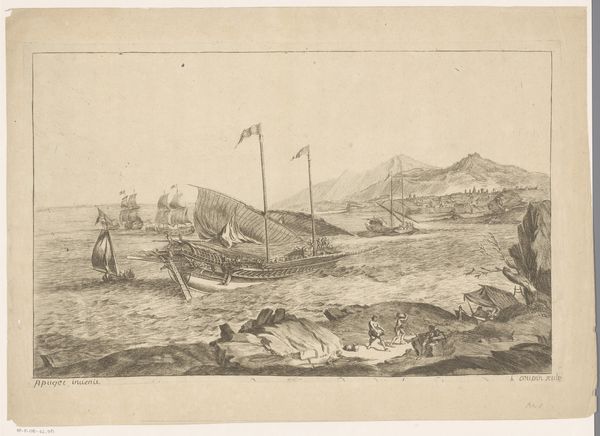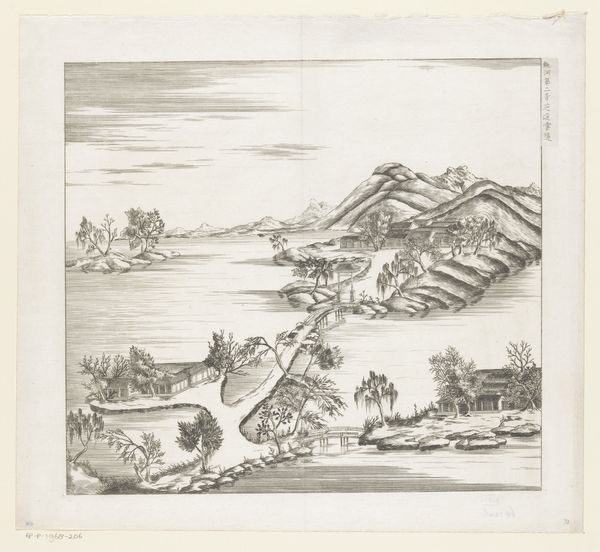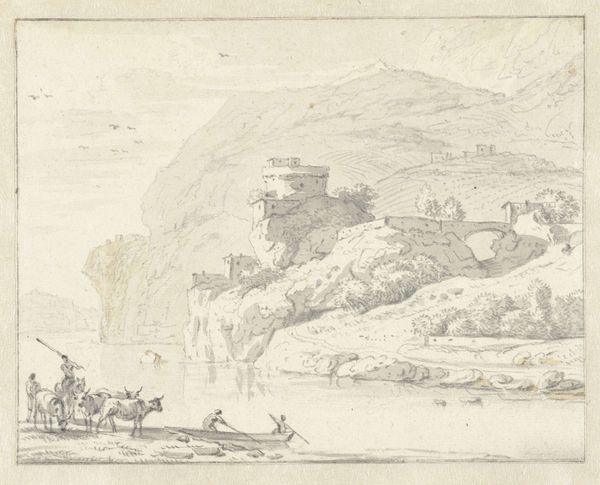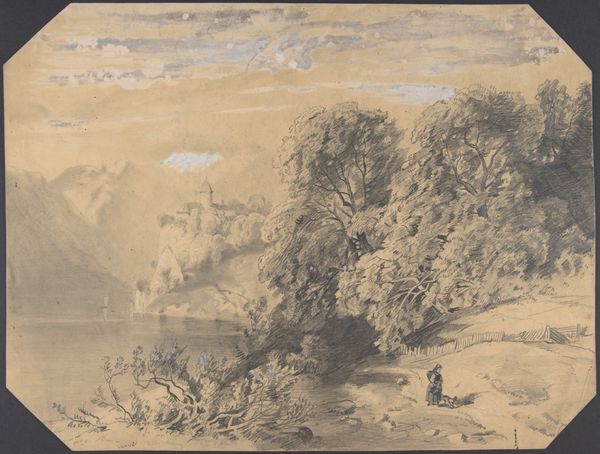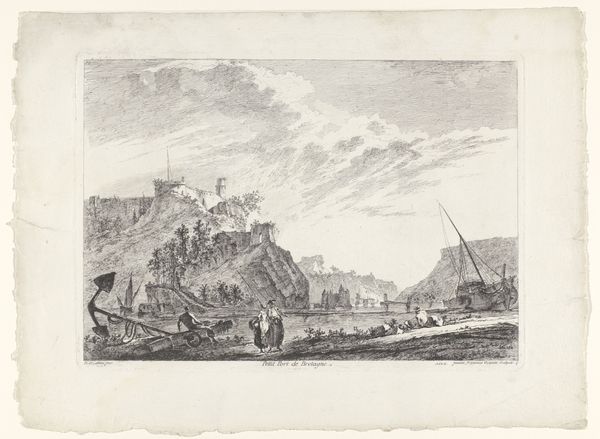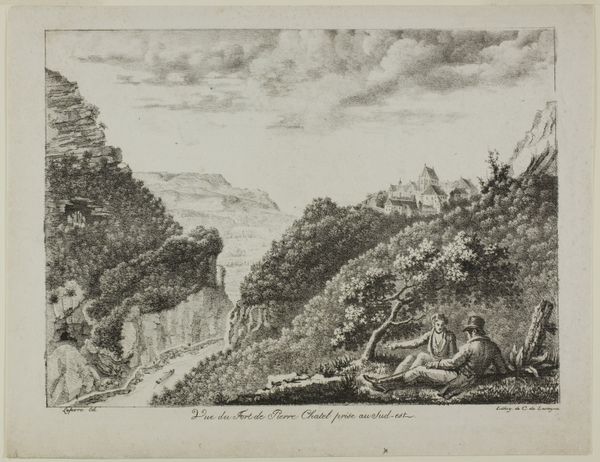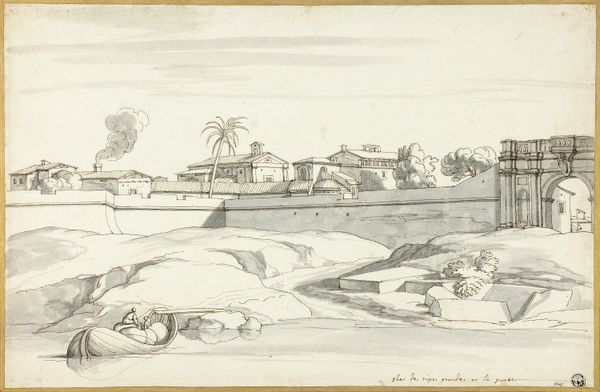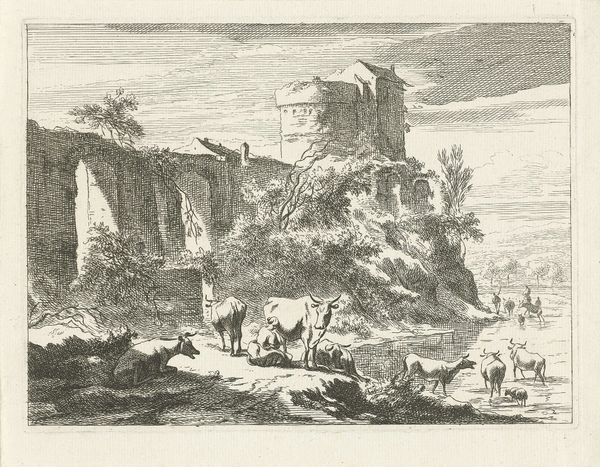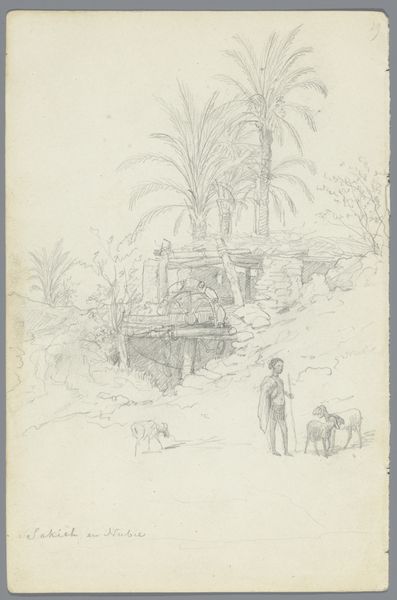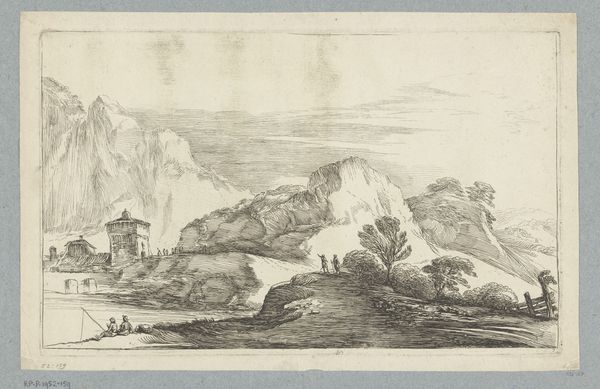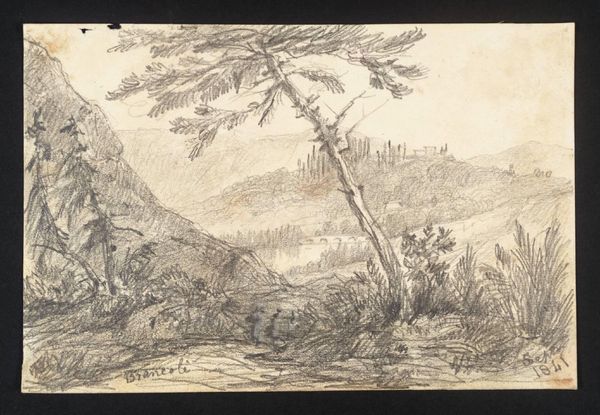
Mediterranean landscape (recto); Mountains (verso) 1830 - 1864
drawing, pencil
drawing
ink drawing
landscape
romanticism
pencil
cityscape
realism
Dimensions: sheet: 10 1/16 x 14 3/4 in. (25.6 x 37.4 cm)
Copyright: Public Domain
Curator: Here we have Alexandre Calame's "Mediterranean Landscape," dating from roughly 1830 to 1864. It's a drawing done in pencil and ink. Editor: My first impression is of serene tranquility. The muted tones evoke a certain quietude. What immediately jumps out at me are the winding roads and the lone figure; there is definitely a somber human presence. Curator: Indeed. Calame skillfully utilizes linear perspective, leading our eye from the coastline, dominated by the Mediterranean, into the structures nestled amongst the landscape and toward the figure taking it all in. I find it fascinating how the artist employs varied stroke weights. Look at the boldness used for the foliage, contrasting with the almost hazy rendering of the mountains. Editor: The 'hazy' quality makes me think about the legacy of landscape painting and how such works played a role in constructing a certain romantic vision of the natural world – particularly for those who may have had no real access to it. Think about how these landscapes served specific cultural purposes. Curator: I agree that one cannot remove landscape art from its historical context. In this artwork, though, the almost photographic detailing gives an insight into the techniques Calame embraced. It is an example of how the structures present in this drawing point to the enduring concerns of formal construction. Editor: True. But by viewing Calame’s work as just a “formal construction,” we risk ignoring the socio-political dimensions of that time. Calame was painting during an era of nascent colonialism, so representing "untouched" landscapes free of their indigenous populations certainly served a propagandistic goal, consciously or unconsciously. The composition almost suggests that one lone European figure can encompass such natural beauty. Curator: That is certainly food for thought. Thinking of the historical circumstances can expand one’s idea of what is shown here. Editor: Absolutely. Ultimately, that dialectic - where the visual language meets its social implications - helps enrich how we appreciate Calame’s landscape today.
Comments
No comments
Be the first to comment and join the conversation on the ultimate creative platform.

